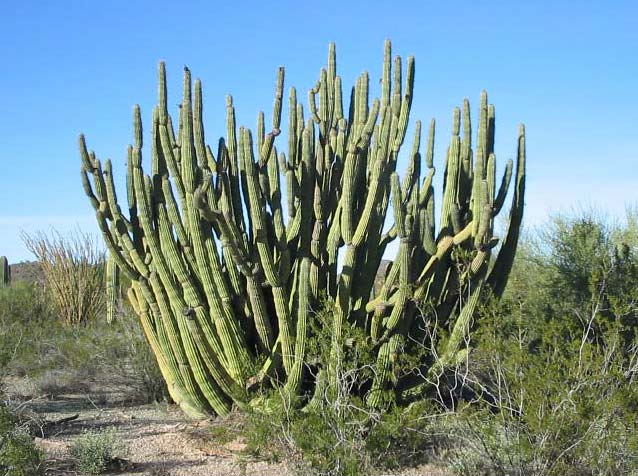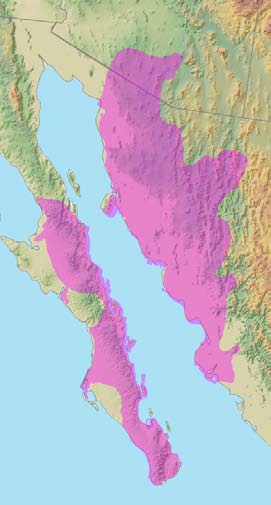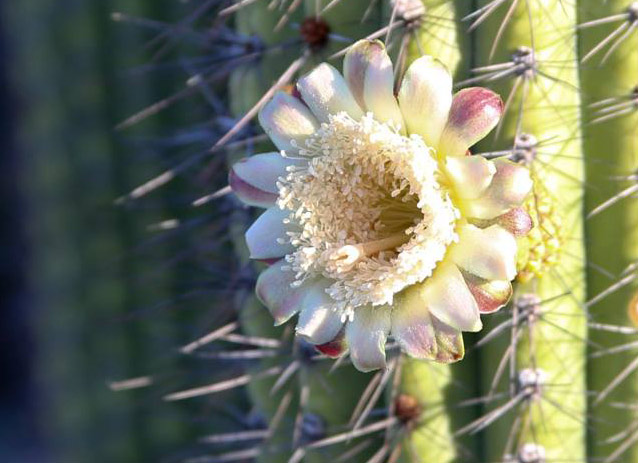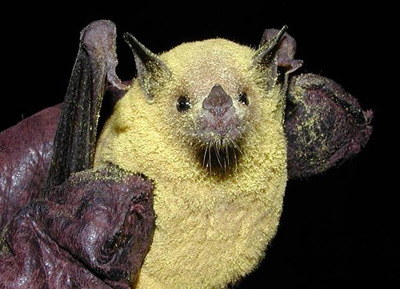Background

© Sue Rutman

The namesake species of Organ Pipe Cactus National Monument, the organ pipe cactus (Stenocereus thurberi) is the second-largest columnar cactus in the United States and can grow up to 23 feet tall. With many slender, curving stems that some believe resemble the pipes of an old-fashioned organ, organ pipes are tuned to the rhythms of the sun and infrequent rains. At the northern distributional limit within the United States, the organ pipe is of interest to many scientists.
Distribution
Organ pipe cacti occur from southwestern Arizona south to Sonora, Sinaloa, and Baja California, Mexico. The range shows a dependence on predictable, warm-season rains, with the northern range limited by freezing events and the western range likely limited by insufficient summer rains. Because the organ pipe cactus is sensitive to frost, it most often grows on south-facing slopes below 3,300 ft in elevation. More abundant in thrornscrub and tropical deciduous forests, organ pipes also grow in marginal desert habitat. Within the United States, Organ Pipe Cactus National Monument protects the bulk of the population.
Ecology

NPS

© Tim Tibbitts
From May through July, organ pipe flowers open shortly after sunset and close the next morning. The pollination system is adapted to the endangered lesser long-nosed bat (Leptonycteris curasoae) and other nectar-feeding bats. Regeneration of organ pipes over the last century has been irregular. Generally, recruitment is poor during prolonged drought and higher during wet periods with mild winters.
Prepared by the Sonoran Desert Inventory and Monitoring Network, 2007.
Last updated: October 3, 2016
